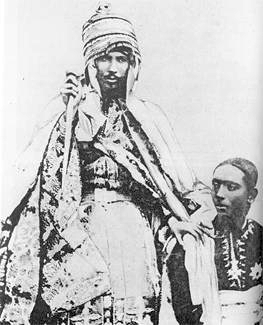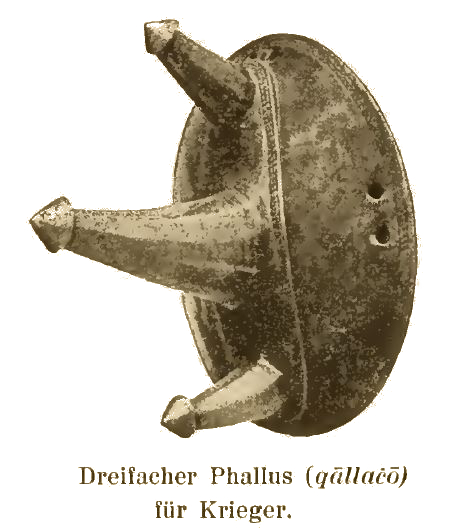|
Tekle Haymanot Of Gojjam
Tekle Haymanot Tessemma, also known as Adal Tessemma, Tekle Haymanot of Gojjam, and Tekle Haimanot of Gojjam (1847 – 10 January 1901), was King of Gojjam. He later was an army commander and a member of the nobility of the Ethiopian Empire. Biography Born Adal Tessemma, Tekle Haymanot Tessemma was the son of Tessemma Goshu, ''Negus'' of Gojjam. Gojjam had long been a vassal kingdom within the Ethiopian Empire. The title "King of Gojjam" was an honorific title. Under Tekle Giyorgis ''Dejazmach'' Tessemma Goshu died during his son's minority. As a result, a rival, and Gojam prince, of the Gojam imperial house, named Ras Desta Tadla assumed control in Gojjam and imprisoned Adal. Adal eventually escaped to the lowlands and raised an army. After returning to Gojjam and defeating Ras Desta, Adal submitted to '' Nəgusä Nägäst'' Tekle Giyorgis who confirmed him as the '' Shum'' of Gojjam and as ''Dejazmach''. The ''Nəgusä Nägäst'' even allowed Adal to marry his pa ... [...More Info...] [...Related Items...] OR: [Wikipedia] [Google] [Baidu] |
Negus
Negus (Negeuce, Negoose) ( gez, ንጉሥ, ' ; cf. ti, ነጋሲ ' ) is a title in the Ethiopian Semitic languages. It denotes a monarch, Merriam Webster dictionary such as the Negus Bahri (king of the sea) of the kingdom in pre-1890 , and the Negus in pre-1974 . The negus is referred to as ... [...More Info...] [...Related Items...] OR: [Wikipedia] [Google] [Baidu] |
El-Gadarif
El-Gadarif ( ar, القضارف '), also spelt ''Gedaref'' or ''Gedarif'', is the capital of the state of Al Qadarif in Sudan. It lies on the road that connects Khartoum with Gallabat on the Ethiopian border, about from the capital. Overview El-Gadarif is surrounded by mountains on three sides. The city represents an excellent example of the intermingled ethnicities of central Sudan. Recently, a university has been established there. The main feature of the city is the grain silo built by the Russians to store sorghum. The town is famous for its daily sesame seed auctions. Name The word Gedaref is derived from the Arabic phrase (Alli qada-Ye-rif) (Arabic القضا يرف), meaning 'He who has finished selling or buying should leave'. The phrase was later developed into 'Al-Gadarif'. The story of the name begins when Arab nomad tribes roaming the Butana plains in East-central Sudan chose the place where the city is built as a market place called Suq Abu Sinn (the Market of Abu ... [...More Info...] [...Related Items...] OR: [Wikipedia] [Google] [Baidu] |
Mahdist State
The Mahdist State, also known as Mahdist Sudan or the Sudanese Mahdiyya, was a state based on a religious and political movement launched in 1881 by Muhammad Ahmad bin Abdullah (later Muhammad al-Mahdi) against the Khedivate of Egypt, which had ruled the Sudan since 1821. After four years of struggle, the Mahdist rebels overthrew the Ottoman-Egyptian administration and established their own "Islamic and national" government with its capital in Omdurman. Thus, from 1885 the Mahdist government maintained sovereignty and control over the Sudanese territories until its existence was terminated by the Anglo-Egyptian forces in 1898. Mohammed Ahmed al-Mahdi enlisted the people of Sudan in what he declared a jihad against the administration that was based in Khartoum, which was dominated by Egyptians and Turks. The Khartoum government initially dismissed the Mahdi's revolution; he defeated two expeditions sent to capture him in the course of a year. The Mahdi's power increased, and his ... [...More Info...] [...Related Items...] OR: [Wikipedia] [Google] [Baidu] |
Araya Selassie Yohannes
''Ras'' Araya Selassie Yohannes ( ti, አርአያ ስላሴ ዮሓንስ ''araya səllase yohannəs''; "horse name" Abba Deblaq) (1869/70 – 10 June 1888) was a son of ''atse'' Yohannes IV from his wife Masitire Selassie, a daughter of a Muslim Afar chieftain whom he married after she was Christened. Araya was nominated Crown Prince. Araya was the first husband of Zewditu (later Empress), the daughter of ''atse'' Menelik II, having married her in January 1883. He was given the command of Wollo province at the time of his wedding. Because of a revolt raised in Wollo due to the death of ''dejazmach'' Amda Sadiq, chief of Tekaledere, in a quarrel with Araya's followers, Yohannes IV decided to appoint ''ras'' Mikael Ali, the traditional claimant to the lordship of Wollo. ''Ras'' Araya was transferred to Begemder and Dembaya in May 1886. In 1887–88, when the country was facing the Italian threat, he was commander of 40,000 troops near Adwa. Araya died in his youth from smallpox, ... [...More Info...] [...Related Items...] OR: [Wikipedia] [Google] [Baidu] |
Wollo
Wollo (Amharic: ወሎ) was a historical province of northern Ethiopia that overlayed part of the present day Amhara, Afar, and Tigray regions. During the Middle Ages this region was known as Bete Amhara and had Amhara kings. Bete Amhara had an illustrious place in Ethiopian political and cultural history. It was the center of the Solomonic Dynasty established by Emperor Yekuno Amlak around Lake Hayq in 1270, the original center of Amhara people, whose territorial reach extended from Lake Hayq and the Beshillo River in the north, the Afar and Argobba lowlands in the east, the Abbay River in the West, and the Awash River just south of modern Addis Ababa. Background Today's Wollo was long the center of Ethiopia (half under Agew/Zagwe and half under the Amhara/ Solomonic leadership). The people of Amhara and Zagwe Provinces (today's Wollo) were the strongest adherents of Christianity and both believed in Israelite Semitic Biblical Ancestry Agew/Zagwe claimed lineage from Mos ... [...More Info...] [...Related Items...] OR: [Wikipedia] [Google] [Baidu] |
Battle Of Embabo
The Battle of Embabo was fought 6 June 1882, between the Shewan forces of ''Negus'' Menelik and the Gojjame forces of ''Negus'' Tekle Haymanot. The forces fought to gain control over the Oromo areas south of the Gibe River.Shinn, p. 67 The Gojjame forces under Tekle Haymanot were defeated. This is one of the three battles (along with Chelenqo and Adwa) which Donald Donham lists that led to Shewan supremacy over the rest of Ethiopia. Background South of Gojjam, across the Abay River, and southwest of Shewa, lay the fertile Gibe region and the gold deposits beyond. Both polities craved control of these resources in order to assert dominance over the rest of Ethiopia. Of the two, the Gojjame had the earlier start and better position: as early as 1810, a large volume of luxury trade passed North through Gojjam (and its major market at Boso) to the coast of the Red Sea, far more than passed east through Shewa to the coast. ''Negus'' Bofo of Limmu-Ennarea maintained good relation ... [...More Info...] [...Related Items...] OR: [Wikipedia] [Google] [Baidu] |
Kingdom Of Kaffa
The Kingdom of Kaffa was a kingdom located in what is now Ethiopia from 1390 to 1897, with its first capital at Bonga. The Gojeb River formed its northern border, beyond which lay the Gibe kingdoms; to the east the territory of the Konta and Kullo peoples lay between Kaffa and the Omo River; to the south numerous subgroups of the Gimira people, and to the west lay the Majangir people. The native language, also known as Kaffa, is one of the Omotic group of languages. Kaffa was divided into four sub-groups, who spoke a common language Kefficho, one of the Gonga/Kefoid group of Omotic languages; a number of groups of foreigners, Ethiopian Muslim traders and members of the Ethiopian Church, also lived in the kingdom. There were a number of groups of people, "but with the status of submerged status", who also lived in the kingdom; these included the ''Manjo'', or hunters; the ''Manne'', or leatherworkers; and the ''Qemmo'', or blacksmiths. The ''Manjo'' even had their own king ... [...More Info...] [...Related Items...] OR: [Wikipedia] [Google] [Baidu] |
Shewa
Shewa ( am, ሸዋ; , om, Shawaa), formerly romanized as Shua, Shoa, Showa, Shuwa (''Scioà'' in Italian language, Italian), is a historical region of Ethiopia which was formerly an autonomous monarchy, kingdom within the Ethiopian Empire. The modern Ethiopian capital Addis Ababa is located at its center. Modern Shewa includes the historical Endagabatan province. The towns of Debre Berhan, Antsokia, Ankober, Entoto and, after Shewa became a Provinces of Ethiopia, province of Ethiopia, Addis Ababa have all served as the capital of Shewa at various times. Most of northern Shewa, made up of the districts of Menz, Tegulet, Yifat (Ethiopia), Yifat, Menjar and Bulga, Ethiopia, Bulga, is populated by Christian Amhara people, Amharas, while southern Shewa is inhabited by the Gurages and eastern Shewa has large Oromo and Argobba people, Argobba Islam in Ethiopia, Muslim populations. The monastery of Debre Libanos, founded by Saint Tekle Haymanot, is located in the district of Selale, al ... [...More Info...] [...Related Items...] OR: [Wikipedia] [Google] [Baidu] |
Menelik II Of Ethiopia
, spoken = ; ''djānhoi'', lit. ''"O steemedroyal"'' , alternative = ; ''getochu'', lit. ''"Our master"'' (pl.) Menelik II ( gez, ዳግማዊ ምኒልክ ; horse name Abba Dagnew (Amharic: አባ ዳኘው ''abba daññäw''); 17 August 1844 – 12 December 1913), baptised as Sahle Maryam (ሣህለ ማርያም ''sahlä maryam'') was King of Shewa from 1866 to 1889 and Emperor of Ethiopia from 1889 to his death in 1913. At the height of his internal power and external prestige, the process of territorial expansion and creation of the modern empire-state was completed by 1898.Zewde, Bahru. A history of Ethiopia: 1855–1991. 2nd ed. Eastern African studies. 2001 The Ethiopian Empire was transformed under Emperor Menelik: the major signposts of modernisation were put in place, with the assistance of key ministerial advisors. Externally, Menelik led Ethiopian troops against Italian invaders in the First Italo-Ethiopian War; following a decisive victory at the Battle ... [...More Info...] [...Related Items...] OR: [Wikipedia] [Google] [Baidu] |
Kaffa Province, Ethiopia
Kaffa (Amharic: ከፋ) was a province on the southwestern side of Ethiopia; its capital city was Bonga. It was named after the former Kingdom of Kaffa or "Kefa". Kaffa was bordered on the west by Sudan, on the northwest by Illubabor, on the north by Walega, on the northeast by Shewa, on the east by Sidamo, and on the southeast by Gamu-Gofa. Legendary accounts state that the etymology of Kaffa is from the Arabic ''qahwah'' meaning "a drink from berries". According to legend, ancestors of today's Kaffa people in southwest Ethiopia were the first to cultivate the coffee plant and recognise the energising effect of the coffee beverage. See also * Kingdom of Kaffa * History of Ethiopia Ethiopia is one of the oldest countries in Africa, the emergence of Ethiopian civilization dates back thousands of years. Due to migration and imperial expansion, it grew to include many other primarily Afro-Asiatic-speaking communities, includ ... References {{Coord, 7, N, 37, E, reg ... [...More Info...] [...Related Items...] OR: [Wikipedia] [Google] [Baidu] |
Debre Tabor
Debre Tabor ( am, ደብረ ታቦር, lit. "Mount Tabor") is a town and woreda in north-central Ethiopia. Located in the Debub Gondar Zone of the Amhara Region, about 100 kilometers southeast of Gondar and 50 kilometers east of Lake Tana, this historic town has a latitude and longitude of with an elevation of above sea level. The presence of at least 48 springs in the area contributed to the development of Debre Tabor. Debre Tabor is served by an airport (ICAO code HADT, IATA DBT). History Origin Authorities differ over the facts of its founding. Mordechai Abir states that it was founded by Ras Ali I; however, Richard Pankhurst gives a detailed account of its foundation by Ras Gugsa, and includes the tradition that the location was selected with supernatural help. In either case, Debre Tabor was the seat of the Regents of the Emperor in the 18th and 19th centuries, from which periods several churches and the ruins of two palaces survive. Debre Tabor was the capita ... [...More Info...] [...Related Items...] OR: [Wikipedia] [Google] [Baidu] |






.jpg)